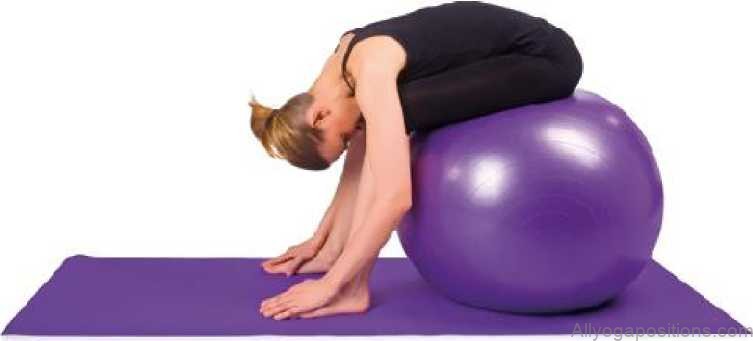PILATES MOVES : ROCKiNG, ROUNDED BACK
Recommandations
The distance between your chest and legs should always be the same. Perform the movement
using only your abdominals. Do not tilt your head back and do not nod it while performing the
movements.
Muscles required: femoral biceps, gastrocnemii, abdominals, buttocks.
Starting position:
Sit on the floor, hold your ankles and draw them up. Find your balance. Tense your abdominals. Your back should remain really straight and your arms should be tense.
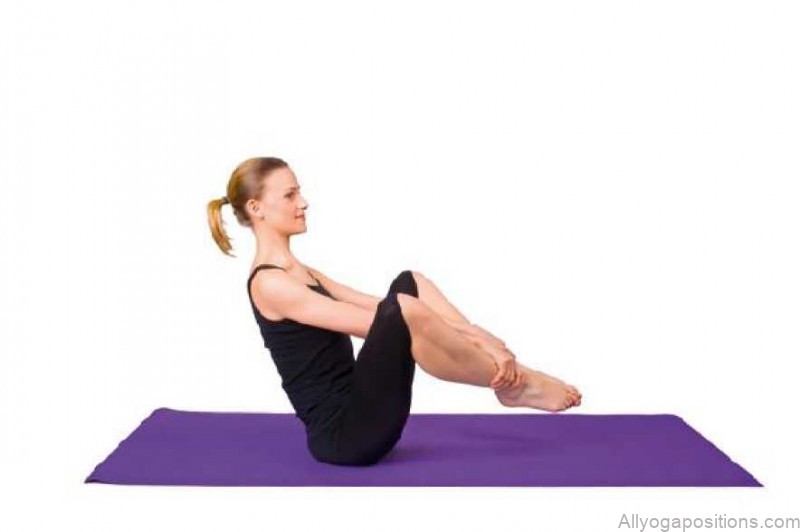
Lift your legs:
Take a small breathe in, lift your legs and shoulders by tensing your thighs and calves. Start to lean backwards using your abdominals. Do not relax them and do not lift your shoulders.
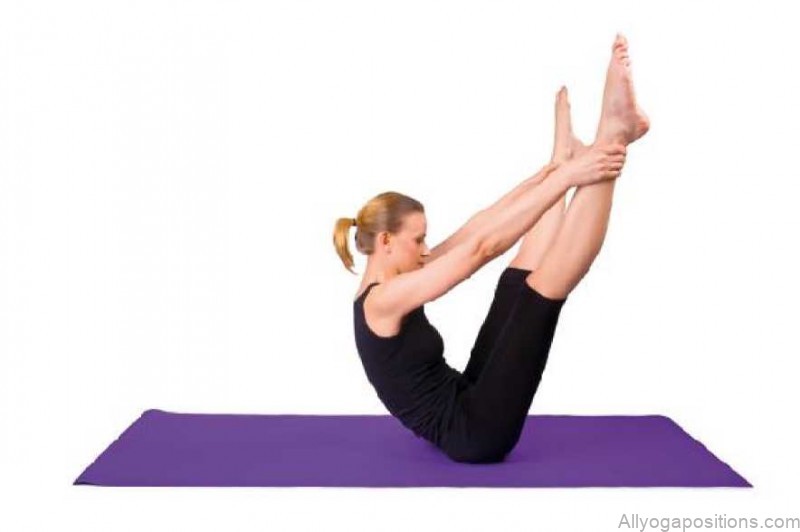
Roll backwards:
Roll back until your shoulder blades are touching the floor. Do not touch the floor with your head or neck. To finish the exercise, roll in the other direction onto your coccyx. Keep your legs in the same position and at the same angle during the movements.
PILATES MOVES : Leg movements
Recommandations
Keep your shoulders straight and do not strain your neck. The top of your head should be drawn
up. Your toes should be pointed. In this exercise, the movements are performed with only one leg,
the other is relaxed. Repeat 3 to 5 times for each leg.
Muscles required: hamstrings, buttocks.
Starting position:
Lie on the mat, stomach on the floor, stretch out both your legs and support yourself on your elbows. Tense your buttocks. Your shoulders should be lowered and the top of your head drawn forward and up.
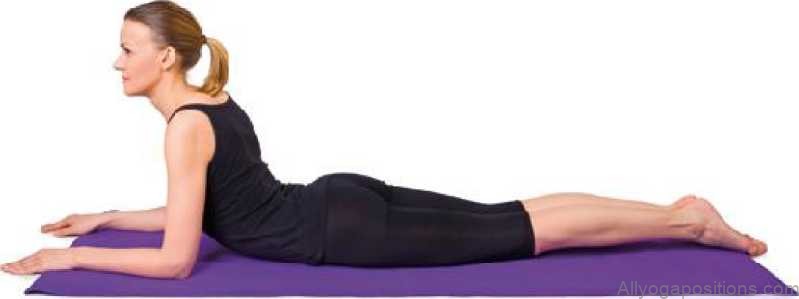
Lift your left leg:
As you breathe in, move your left leg towards your left buttock. Your buttocks should be tense. Do not lift your thigh off the floor.
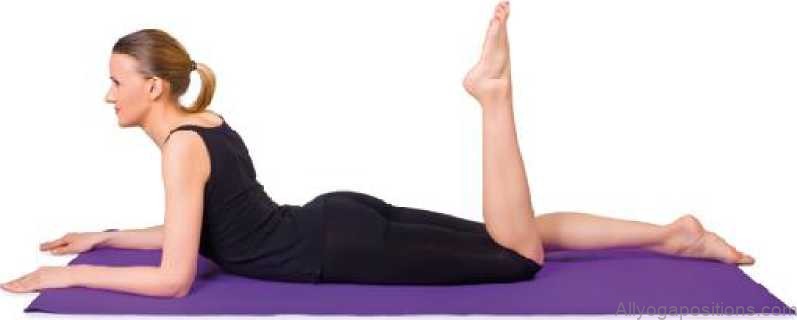
Back arched:
Point your toes. After two repetitions, squeeze your leg against your buttock as hard as possible, then as you breathe out, slowly lower it to the floor.
Repeat the same movement with your right leg, performing the exercise slowly. Control your movements and move smoothly.
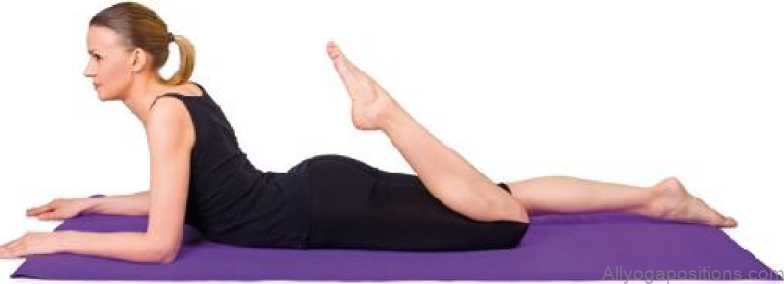
PILATES MOVES : Double leg movements
Recommandations
In this exercise, both your legs should be working. Your toes should be pointed. The top of your
head should be stretched up. Stretch and pull your belly button back towards your spine. Your
movements should be smooth.
Muscles required: shoulder muscles, arms, upper part of the back and hamstrings, buttocks.
Starting position:
Lie down, hands together behind your back, your elbows placed on the floor. Turn your head to the side.

Bend your legs:
Lower your shoulders, stretch your neck and tense your buttocks. As you breathe in, try to reach your buttocks with your heels, bending your legs. Do not lift your thighs off the floor.
Stretch behind you:
As you breathe out, once your legs are on the floor, straighten your arms and lift your chest. Stretch your arms back. Draw your shoulder blades together tightly. Your elbows should be turned out. Slowly place your chest on the floor, then return to the starting position.
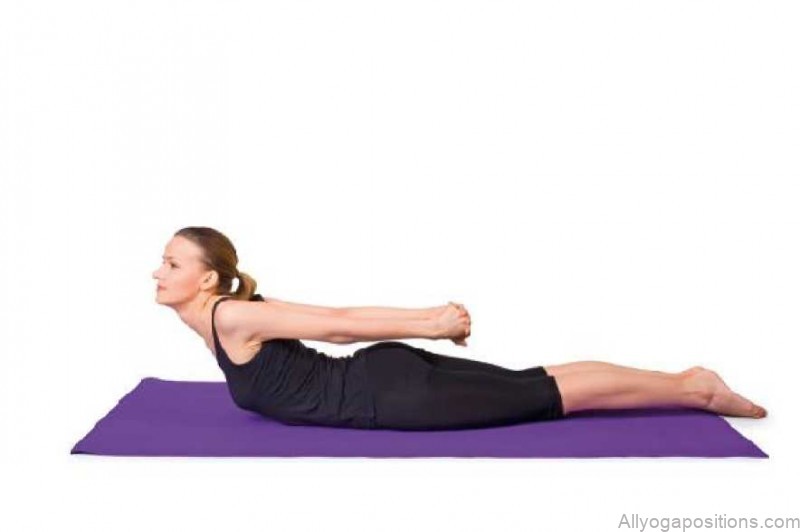
PILATES MOVES : SiDE LEG MOVEMENTS
Recommandations
Keep your legs and buttocks tense. Balance your body with your hand and do not lean to the side.
The leg that your raise should not touch the floor. Repeat 5 to 7 times with each leg.
Muscles required: thigh muscles, quadriceps, buttocks.
Starting position:
Lie on your right side, place your head on your arm and support yourself on the floor with your left arm to hold the position. Your back and neck should be stretched. Your toes should be pointed.
Lift your legs:
As you breathe in, lift both your legs to 30cm above the floor, without lifting your chest off the floor. Keep your body in line. Do not wobble and do not arch your back.

Movement of your legs:
As you breathe out, start to lower your right leg. Lower your leg but do not touch the floor. Then, lift and lower both your legs three more times. Do the same on your left side.

PILATES MOVES : The TRiANGLE
Recommandations
Draw in your stomach, do not bend your knees and do not move your thighs. Stretch your spine with harmonious movements and do not hold your breath. Repeat the exercise 3 to 4 times.
Muscles required: hamstrings, adductors, latissimus dorsi, trapezii, pectoral girdle muscles.
Starting position:
Sit on the mat, your legs half bent. Keep your back straight, your head and neck should remain in line with your back. Place your hands on your knees. Breathe in.
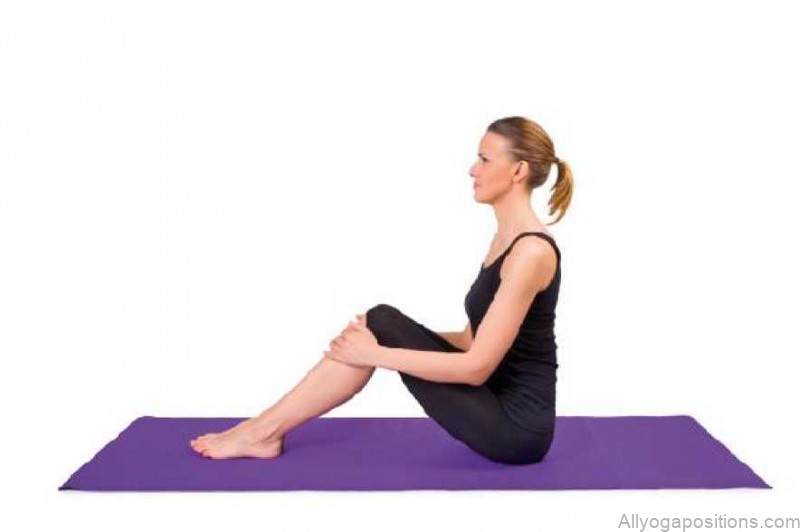
Part your legs:
Place your legs on the floor, as far apart as you can. Your hands should remain on your knees. Breathe in.
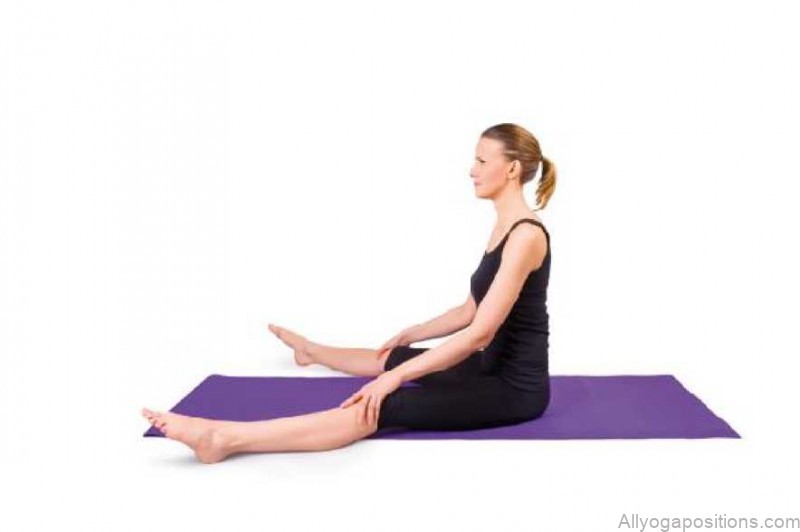
Stretch forward:
As you breathe out, start to lean forward, stretching your back. Your arms will move forward and your back follows your hands. Move smoothly. Your toes should be pointed. Lower yourself towards the floor until you feel your leg and back muscles have extended as far as possible. Return to the starting position.
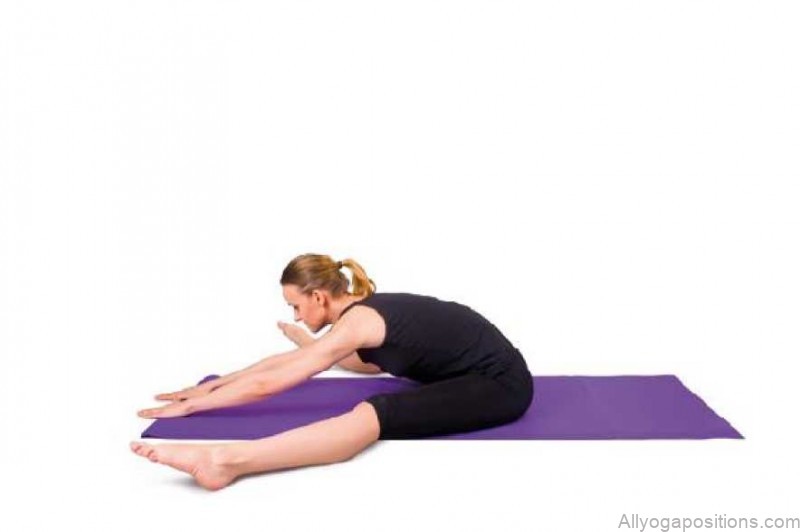
PILATES MOVES : Suspended heel kIcks
Recommandations
Completely relax the upper part of your back. Your thighs should be tense. Lift your hips off the
floor as far as you can, but do not bend your legs. Repeat 4 to 6 times.
Muscles required: Thigh muscles, lumbar muscles, buttocks, abdominals.
Starting position:
Lie on the mat, stomach on the floor, your forehead on your hands. Your legs should be tense and together, and your toes should be pointed.

Detail:
Lift your hips off the floor as you breathe in and keep your legs straight. Hold the position for a few seconds. In this exercise, it is your lumbar spine and hamstrings that are doing the work.
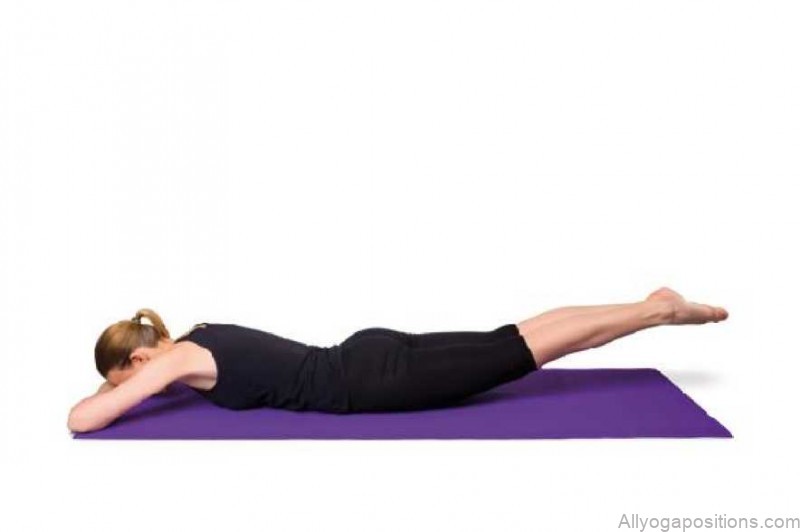
Heel kicks:
Keeping your legs raised, start to tap your heels together. Count 5 taps as you breathe in and 5 taps as you breathe out.
PILATES MOVES : SciSSORS, LEGS STRAIGHT
Recommandations
When performing this exercise, do not hold your breath. Breathe deeply and steadily, your ribs
parting as you breathe. Draw in your stomach and point your toes. Repeat the exercise 3 to 5
times.
Muscles required: back muscles, hamstrings, quadriceps, abdominals.
Starting position:
Lie on your back and lift your legs to a vertical position. Your arms should be straight and placed beside your body. Lower your coccyx to spread your weight over your back.
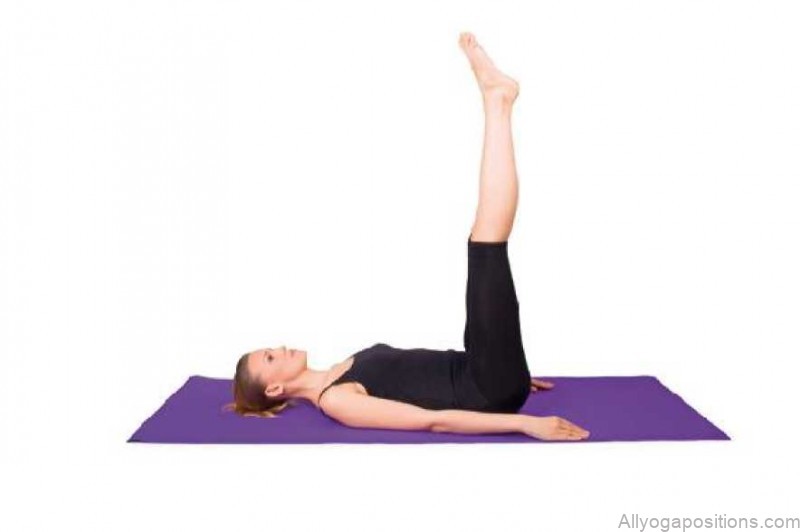
Shoulder stand:
Slowly start to lift your chest using your abdominals. Straighten your chest and legs into a shoulder stand. Support your chest with your arms, at waist level.
Scissor movement:
As you breathe in, start the leg movements. Slowly move, to the rhythm of your breathing, then slowly bring your chest back down, vertebra by vertebra, without any sudden movements, then lower your legs.
PILATES MOVES : Half shoulder stand, legs apart
Recommandations
When twisting, do not forget to tense your abdominals. Do not rush this exercise. Draw in your
stomach. Repeat the exercise 5 times, following the rhythm of your breathing.
Muscles required: buttocks, abdominals (lower), inner and outer thigh muscles, back muscles.
Starting position:
Lie on your back, lift your legs to a vertical position and place your hands beside your body.
Roll up your spine:
As you breathe out, lower your legs above your head, using your abdominals, Perform this movement slowly, rolling yourself up, vertebra by vertebra. Place your legs shoulder-width apart. Your buttocks should be higher than your feet.
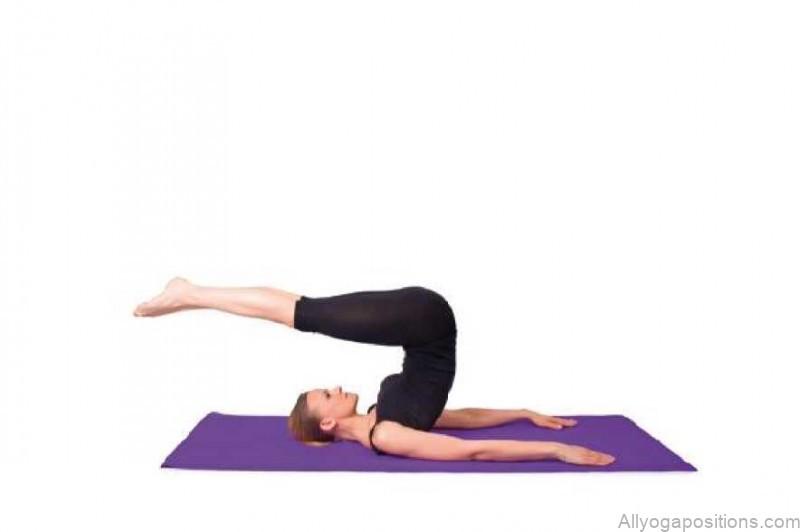
Bring your legs perpendicular to the floor:
As you breathe in, slowly roll down your back in the other direction, vertebra by vertebra, until your chest is on the floor, remaining as tense as possible. When your legs form a 90° angle, hold the position, then return to the starting position.
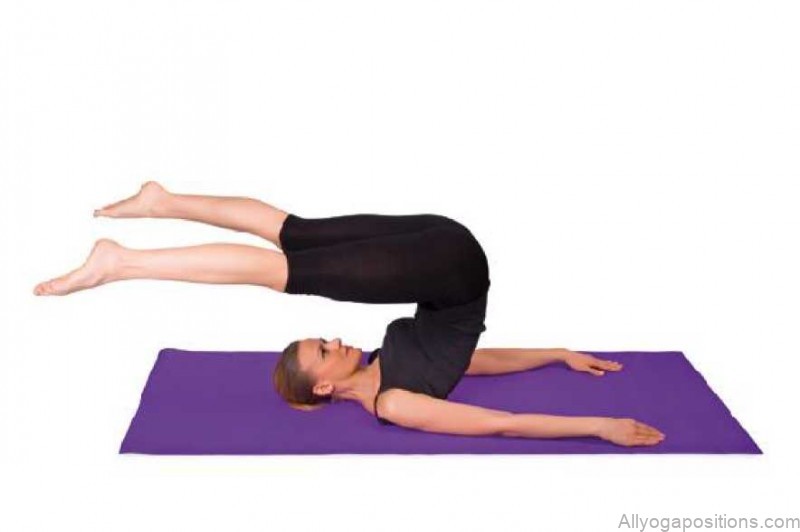
PILATES MOVES : The BicYCLE, chest lIfted
Recommandations
It is better to perform this exercise slowly, concentrating on the muscles you are activating and
your breathing. During the exercise, make sure that your neck is not too tense.
Muscles required: femoral quadriceps, lateral dorsals, buttocks, gastrocnemii.
Starting position:
Lie on your mat and press your lower back into the floor, this will activate your deepest muscles. Your arms rest beside your body.
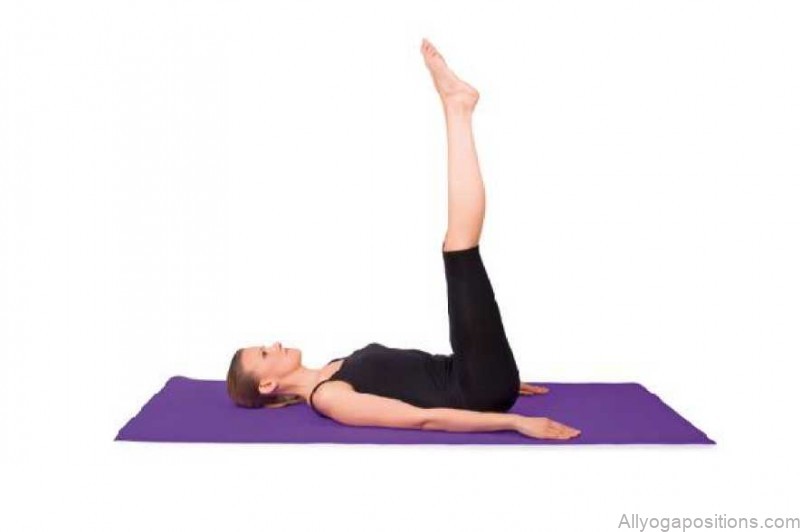
Shoulder stand:
Lift your legs while supporting your chest, place your hands on your waist.
Movement of your legs:
Start the movements as you breathe in. Point your toes. Raise your left leg over your head and lower your right leg, bending it. Repeat this exercise 20 times for each leg.
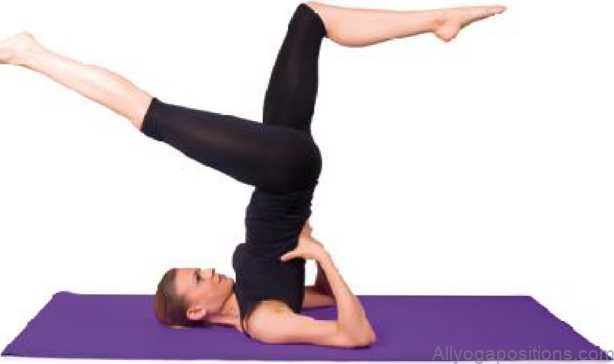
© Irina Samavska – Lenivitz Production
Double leg siDE lIfts
Recommandations
To advance this exercise, place your left hand on your hip. As you lift your legs, slide your hand
down your thigh. Breathing should be deep, steadly and calm. Repeat 5 to 8 times on each side.
Muscles required: inner and outer thigh muscles, buttocks, abdominals (obliques).
Starting position:
Lie on your side, your legs straight and slightly forward, at a 30° angle to your chest. Your toes should be pointed and your heels together.
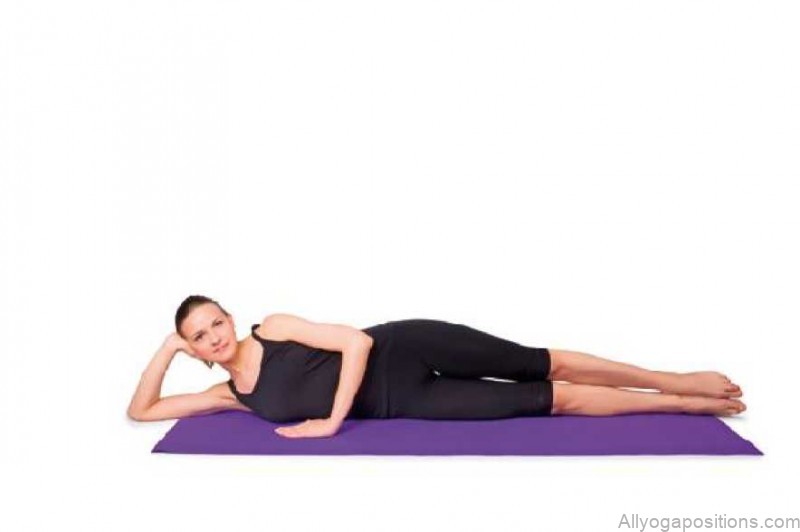
Arch your back:
Support your head on your left hand and keep your balance with your right arm on the floor. Your back should arch naturally.
Lift your legs:
Lift both legs simultaneously, your upper leg should be parallel to the floor. Start the movements with the lower leg, which should not touch the floor.

Forward siDE scissoRS
Recommandations
Tense the top of your head, from the nape of your neck, but do not arch your shoulders. The upper
part of your body should not move. Do not lower your leg below your pelvis. Repeat the exercise
3 times.
Muscles required: quadriceps, pelvic muscles, buttocks.
Starting position:
Lie on your side, keep your elbow in line with your shoulder, back and buttocks. Place your arms behind your head and part your elbows.
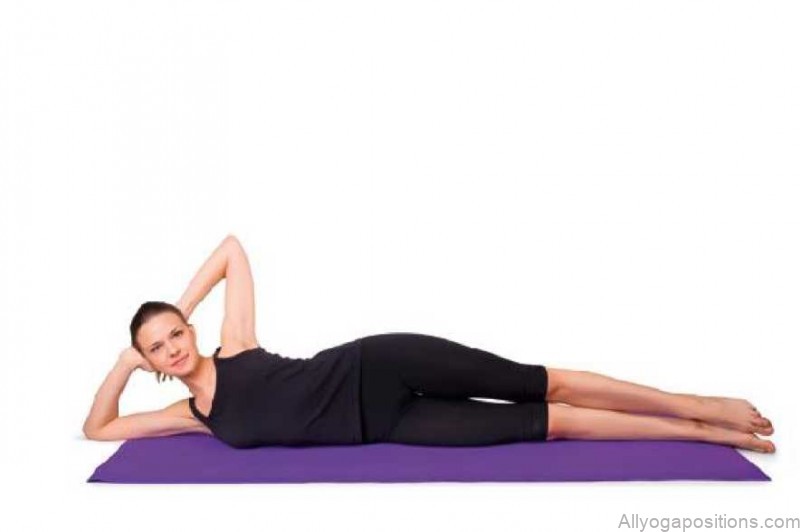
Position of your legs:
Bend one leg in front, at a 45° angle to your chest, your toes pointed. As you breathe out, raise your left leg towards your chest, parallel to the floor.
This movement is performed by contracting the buttock muscles and the upper part of the thigh.
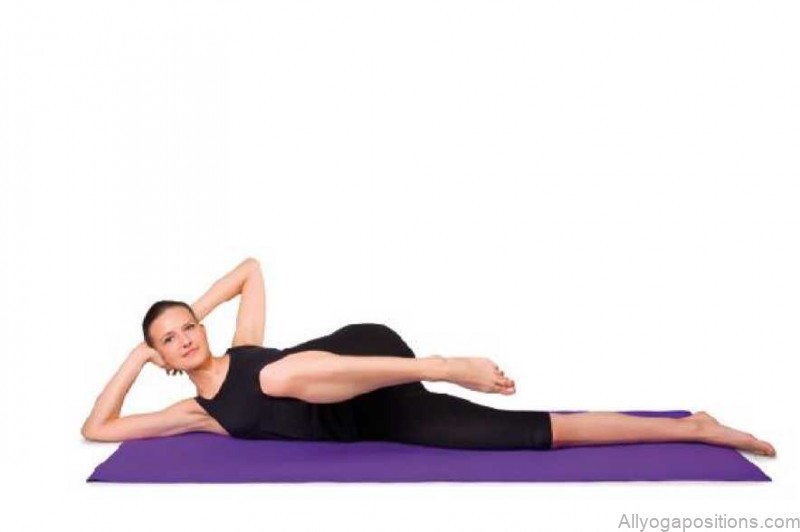
Final movement:
Bend your leg, then straighten it away from you. The other leg should remain straight. As you breathe in, straighten the leg and, as you breathe out, bend it. Pay attention to your body, you should not feel any tension.
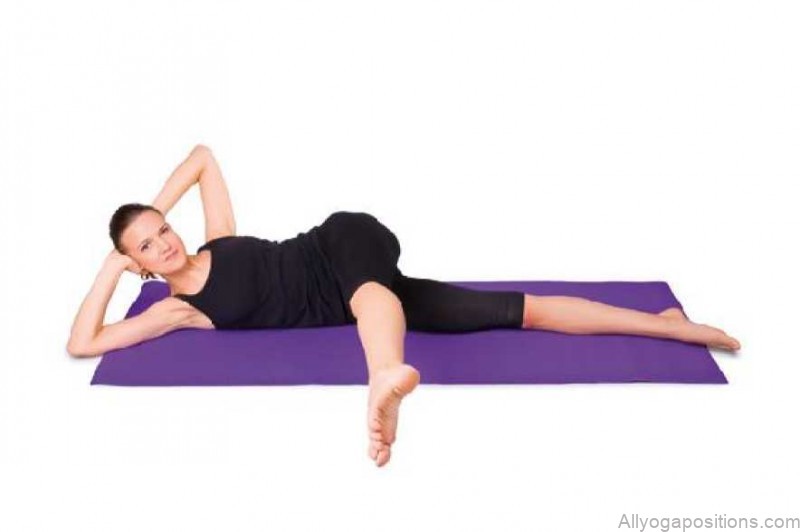
Leg strengthening
Recommandations
Lift your leg as high as possible. When your heel approaches the floor, do two little backward
springing movements. Keep your arms vertical and do not lower your leg. Repeat 3 times for each
leg.
Muscles required: gastrocnemii muscles of the calf, Achilles’ tendon, inner thigh muscles and
hamstring, abdominals.
Starting position:
Lie on your stomach with your legs together, place your hands on the floor. Draw your belly button back towards your spine and lift your body. Straighten your arms until your body forms a straight line.
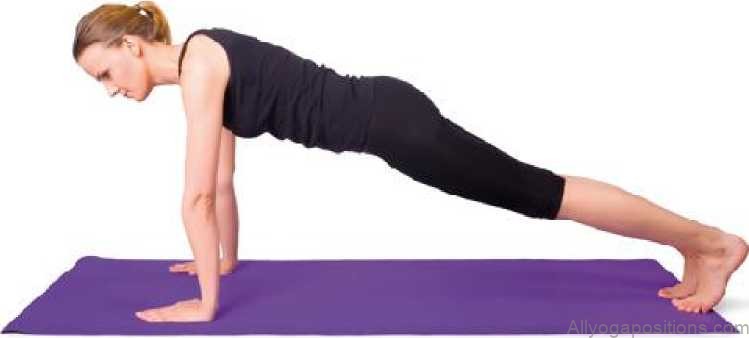
Lift your left leg:
As you breathe out, move your feet back and stretch your heels towards the floor. Lift your left leg, fixing its position and keeping it straight all the way along, while pointing your toes.
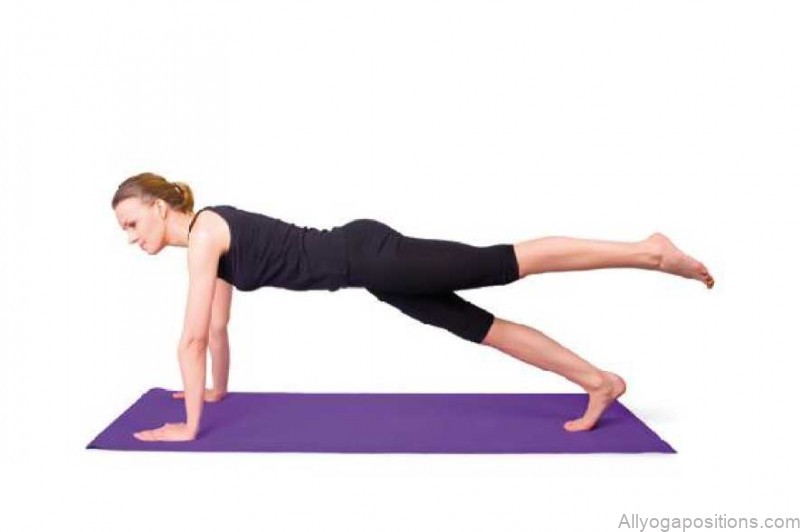
Alternate your two legs:
Do not turn your pelvis and keep your chest parallel to the floor. As you breathe out, move you bodyweight back and stretch your right heel towards the floor. As you breathe in, return to the starting position and change leg.

Arm strengthening
Recommandations
When performing this exercise, do not bend your shoulders and keep your arms really straight.
Tense your buttocks, do not bend your legs and do not arch your back. Keep your head in line with
your body and look straight ahead.
Muscles required: buttocks, pectoral girdle muscles, shoulders and arms, abdominals, leg muscles.
Starting position:
Sit on the floor, place your hands behind and turn them towards you, in line with your shoulders.
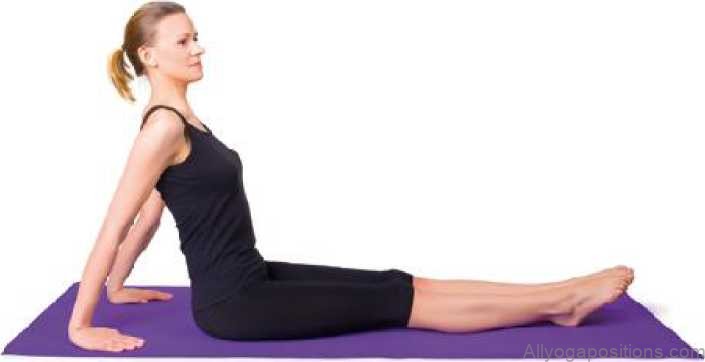
Lift your pelvis:
Lift your pelvis off the floor. Keep your body straight, tensing your legs and plexus. Support yourself on the floor with your toes.
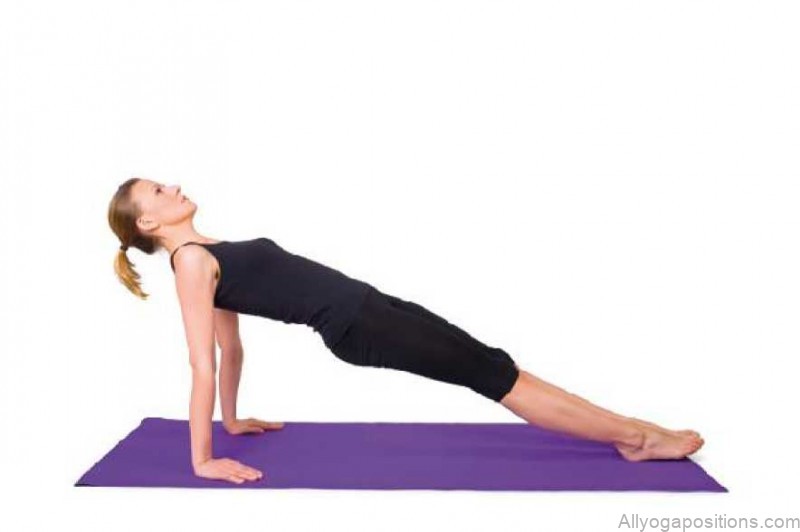
Lift your leg:
As you breathe in, without changing the position of your chest, lift one leg as high as possible. As you breathe out, draw your toes towards you, then slowly lower your leg.
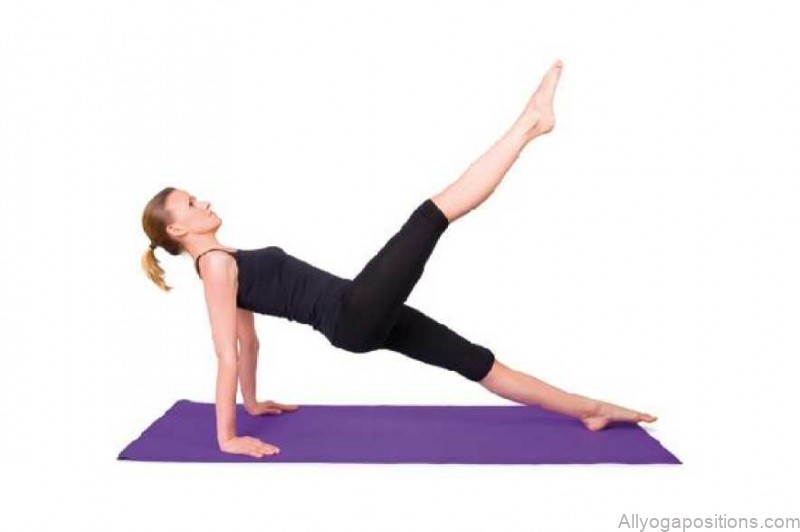
Seated siDE bend
Recommandations
Your breathing should be calm, steady and deep. Stretch the top of your head upwards, in line with
your chest. Draw your belly button back. Repeat the exercise 3 to 5 times.
Muscles required: abdominals, arm muscles, lateral dorsals.
Starting position:
Sit on your side, with your legs bent. Place your feet one on top of the other with your left hand just below your shoulder.
Breathe out:
Place your right hand on your ankle and lift your left hand up. As you breathe out start to bend to the left, stretching out your chest.
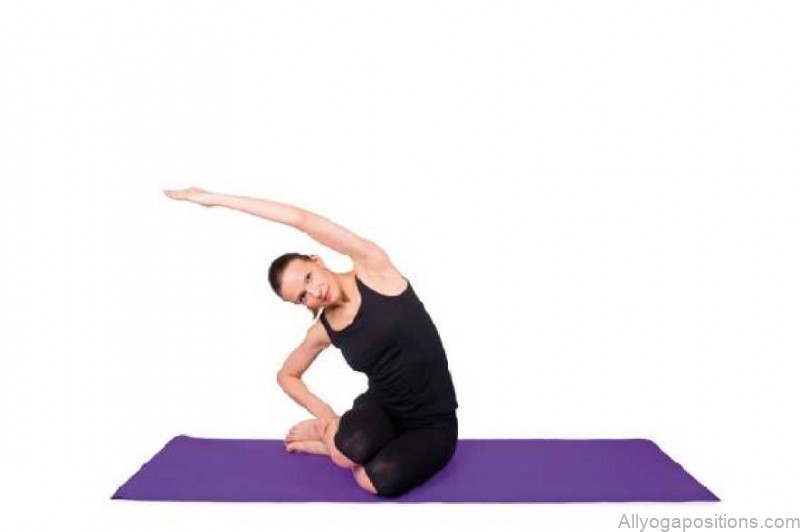
Stretch your abdominals:
As you breathe in, bend as far as possible, so that your abdominals and arm muscles are stretched as much as possible. It is essential in this exercise to keep your balance. Return to the starting position.
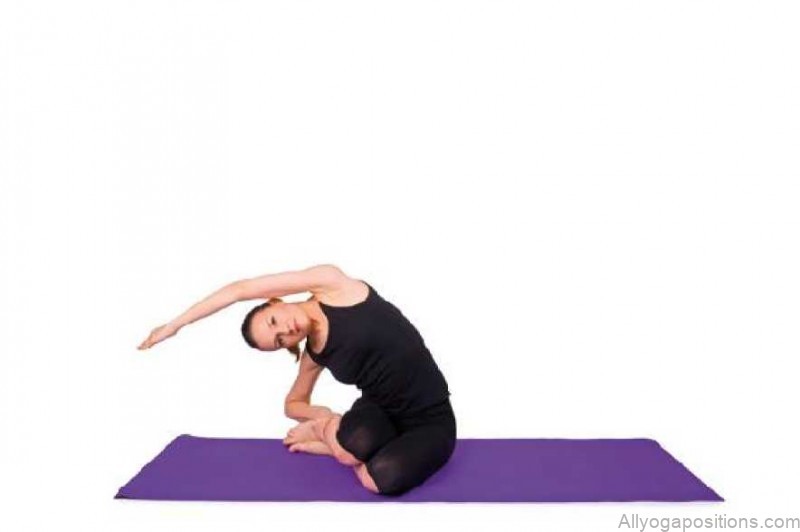
Leg bend, body straight
Recommandations
Pay attention when performing this exercise: you should move your body but never bend it.
Cencentrate on your abdominals. Repeat 3 times on each side.
Muscles required: abdominals, pectoral girdle, arm, chest and shoulder muscles.
Starting position:
Sit on the floor, back straight, arms behind your back, supported on your hands leaning back a little, legs bent.
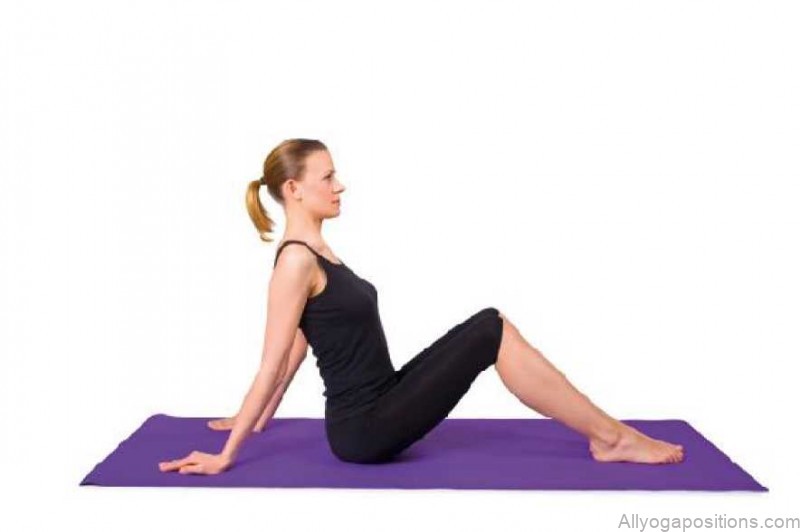
Attention:
Keep your back straight, do not strain your neck and do not bend the small of your back. To keep your arms tense, press your hands into the floor. As you breathe in, straighten and tense your legs, keeping them together.
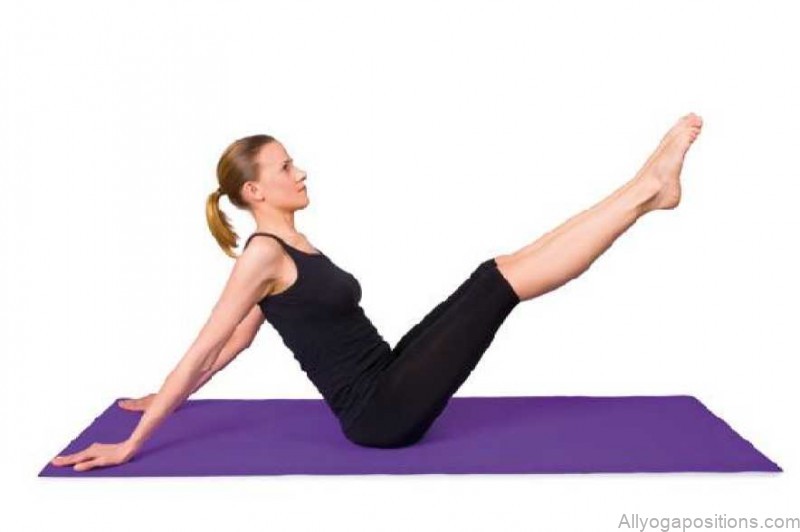
Final movement:
Turn your knees to the right, keeping your heels together. As you breathe out, return to the starting position. To make the exercise easier, you may also support yourself on your elbows.
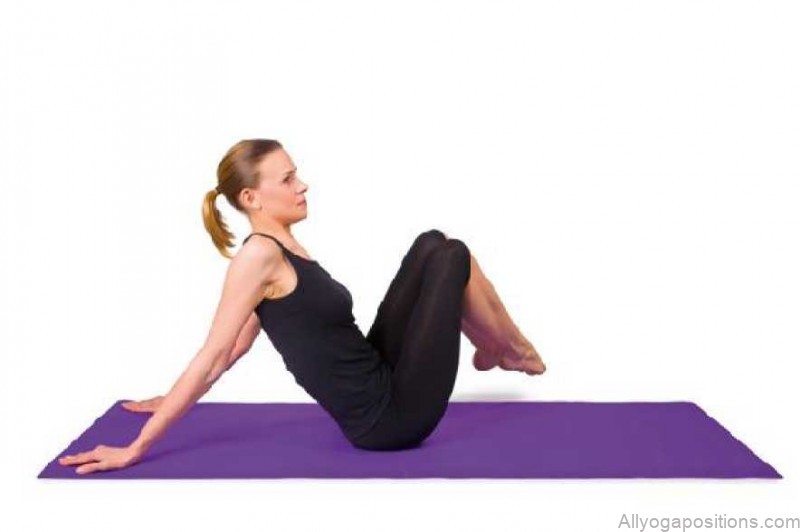
ROCKiNG, ARMS STRETCHED OUT
BEHIND
Recommandations
Stretch out your neck and spine. Breathe deeply, steadily and calmly. Your heels should be
together and your toes apart. Repeat the exercise 4 times.
Muscles required: main muscles of the legs and back, buttocks, abdominals.
Starting position:
Sit with your back straight and your legs stretched out in front of you. Support yourself on the floor, near your buttocks, straighten your chest upwards. As you breathe in, start to lift your legs and lie back at the same time.
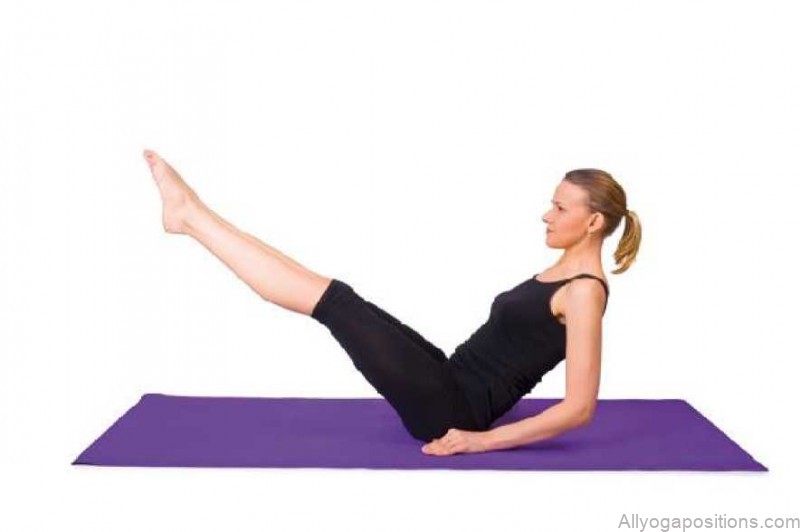
Detail:
As you breathe out, start to rock your stretched legs over your head and then return them to the front. Stretch your arms so that they are parallel to your legs. Draw your arms behind you and interlock your fingers. Do not lift your hands too high.
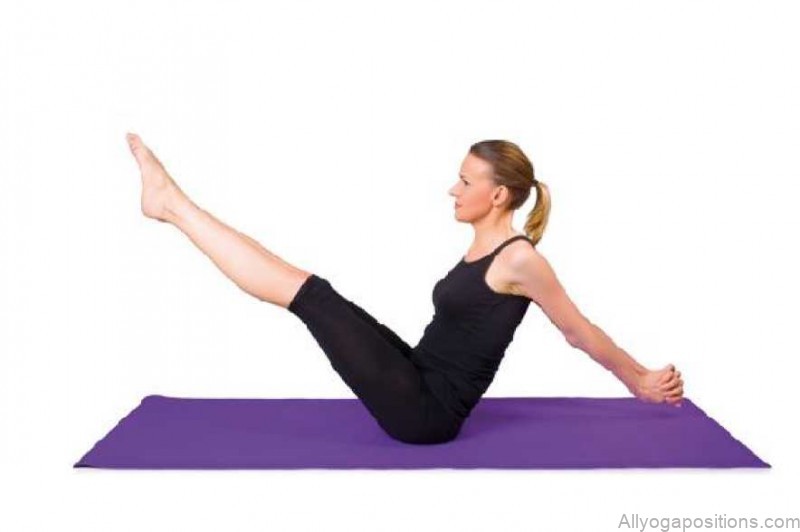
Roll down your spine:
After you have drawn your arms behind you, lower your legs, but do not touch the floor. Your back should become rounded. Lean your body forward and stretch the top of your head forward. Circle your hands to the front and place them on your ankles.
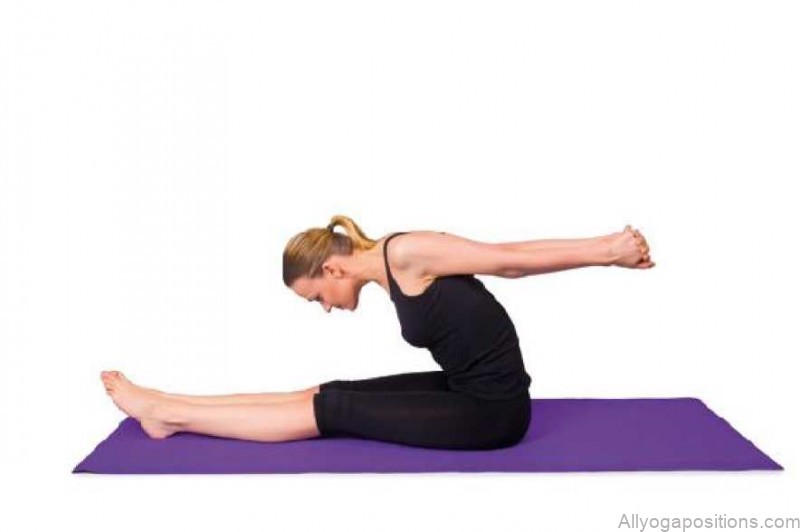
Roll up with leg bend
Recommandations
When performing this exercise, do not forget to keep your body parallel to the floor. Breathe
steadily and move slowly. Repeat 4 to 5 times, or as many times as possible.
Muscles required: abdominals, lumbar muscles, buttocks.
Starting position:
Place your thighs on the ball. Walk your hands forward on the floor, until the ball reaches your ankles.
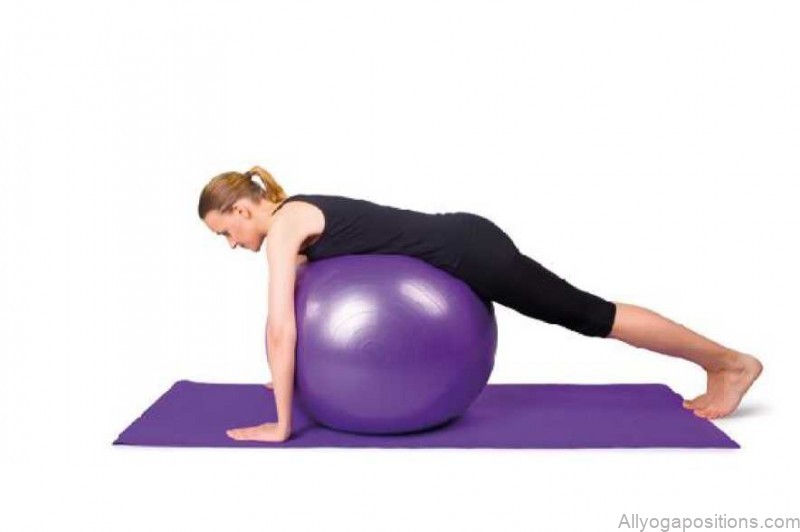
Detail:
Your hands should remain under your shoulders. Make sure that your body is parallel to the floor. Do not lower your pelvis, tense your abdominals.
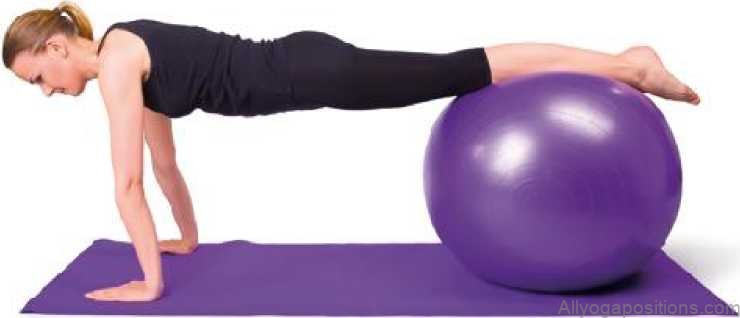
Final position:
Breathe in. As you breathe out, bend your legs and bring your knees up to your chest. As you breathe in, straighten your legs and move the ball back.
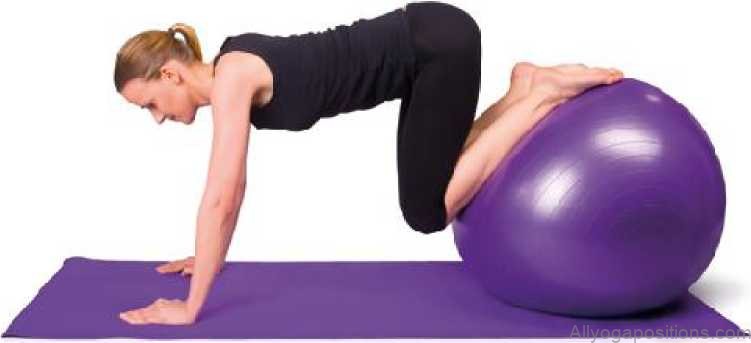
The lance
Recommandations
The angle of your chest should not exceed 90°. If you are a beginner, hold the position and count
to 5 or 8.
Muscles required: abdominal muscles, buttock muscles, biceps, triceps, spinal muscles, deltoid.
Starting position:
Lie on the ball and walk your hands forward, until the ball is located under your ankles. Your hands should be under your shoulders.
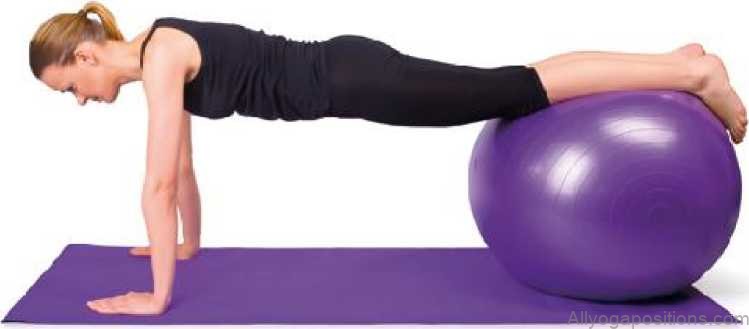
Attention:
Find your point of support and breathe in. As you breathe out, lift your pelvis without bending your legs.
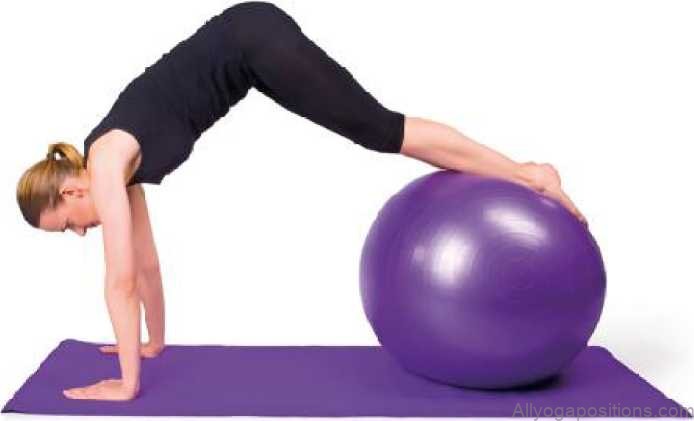
Raise your pelvis:
Slowly start to roll the ball towards your hands. Lifting your pelvis as high as possible, depending on your level. As you breathe in, move the ball back.
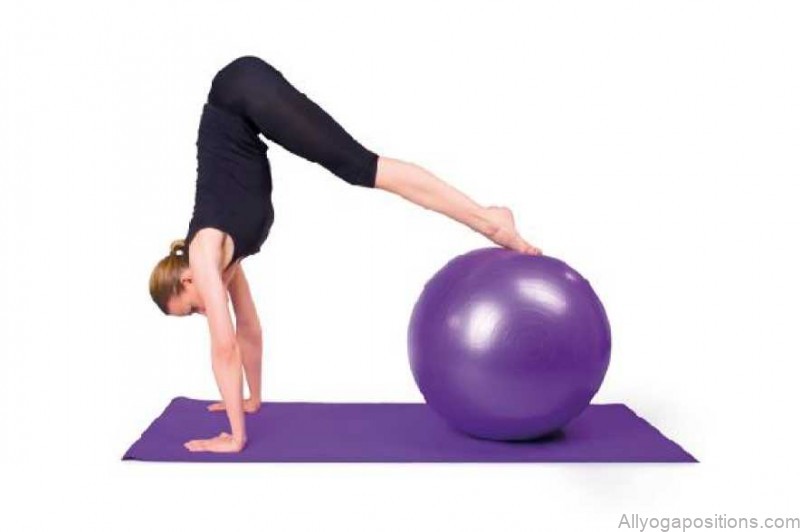
TwiST wiTH SiDE LEG BEND
Recommandations
When moving from the « straight line » position to the « twist » position, do not forget that your
feet should be together. Try not to move them. Tense your buttocks and abdominals as much as
possible.
Muscles required: abdominals (obliques), buttocks, pectoral girdle muscles.
Starting position:
Place your thighs on the ball. Walk your hands forward on the floor, until the ball is under your ankles.
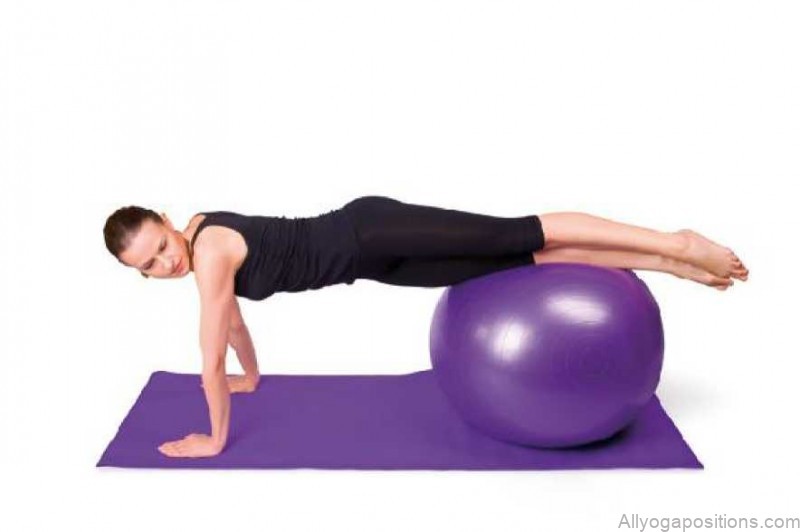
Twist to the side:
Breathe in and, as you breathe out, turn your body to the side. Do no forget that it is only the part below your waist that should turn. Keep your shoulder blades parallel to the floor.
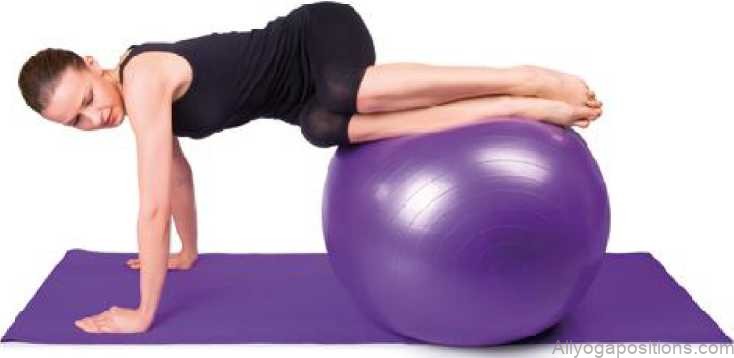
Final movement:
As you breathe out, bend your legs and draw the ball towards your shoulder. As you breathe in, straighten your legs and move the ball back. Repeat on the other side.
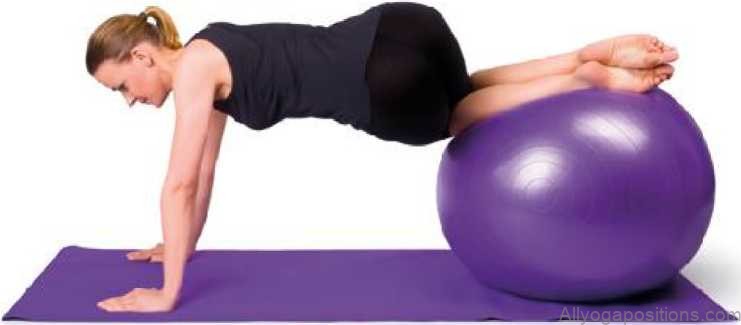
© Irina Samavska – Lenivitz Production
The revolvIng scissoRS
Recommandations
Gentleness plays a very important role in this exercise. The movements follow on slowly from one
another, without pausing or stopping. Repeat the exercise 5 to 6 times.
Muscles required: inner hip muscles, quadriceps, abdominals (obliques).
Starting position:
Lie on your back and place your calves on the ball. You arms should be stretched out at your sides, your hands level with your buttocks, palms up.
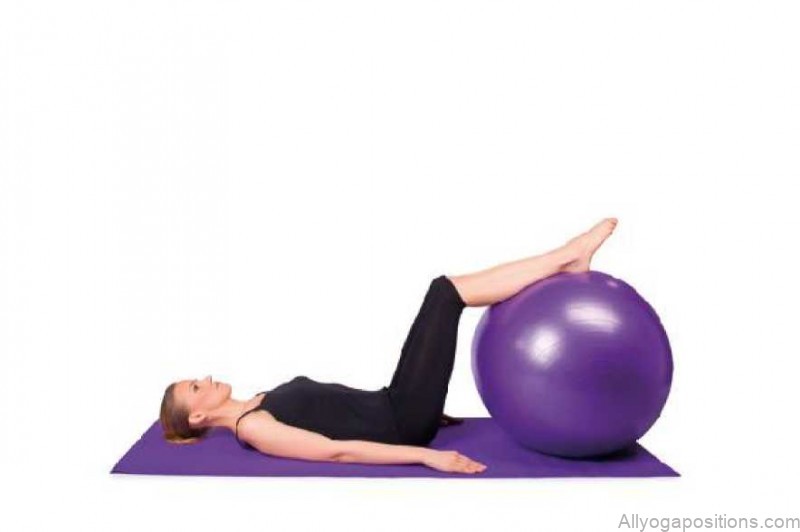
Lift the ball off the floor:
Squeeze the ball tight with your legs. Lift the ball so that your legs are bent at a right angle.
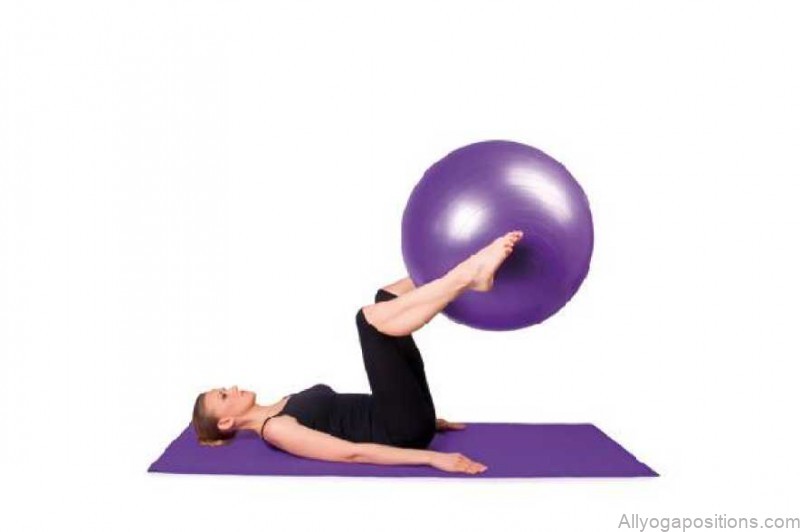
Rock your legs to the right:
Breathe in deeply and, as you breathe out, lean your legs to the right as low as possible. Do not lift your shoulder blades off the floor. As you breathe in, return to the starting position. Repeat on the other side.
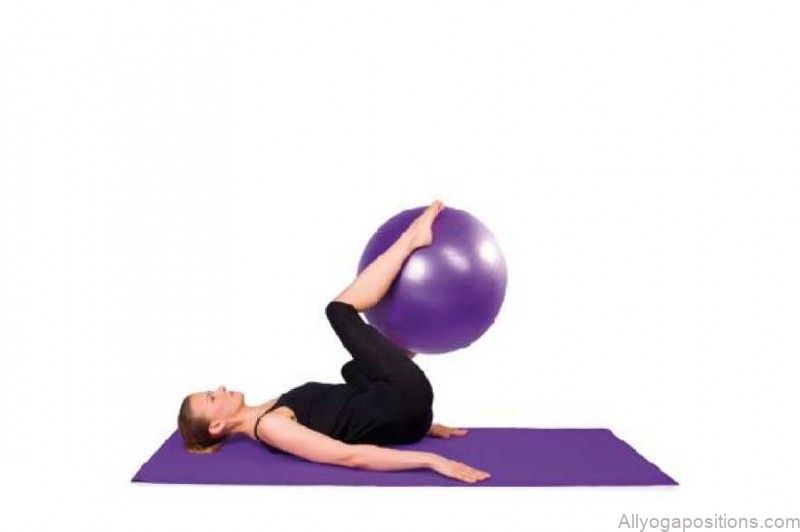
FiRST STRETCH
Recommandations
There are no sudden movements in this exercise. Perform it while supporting yourself on your
toes. Pay great attention to your shoulder blades. Repeat it 7 to 8 times.
Muscles required: thoracolumbar fascia, latissimus dorsi, pectoral girdle muscles, buttocks.
Starting position:
Place your pelvis on the ball, your legs stretched and parted, supporting yourself on your toes.
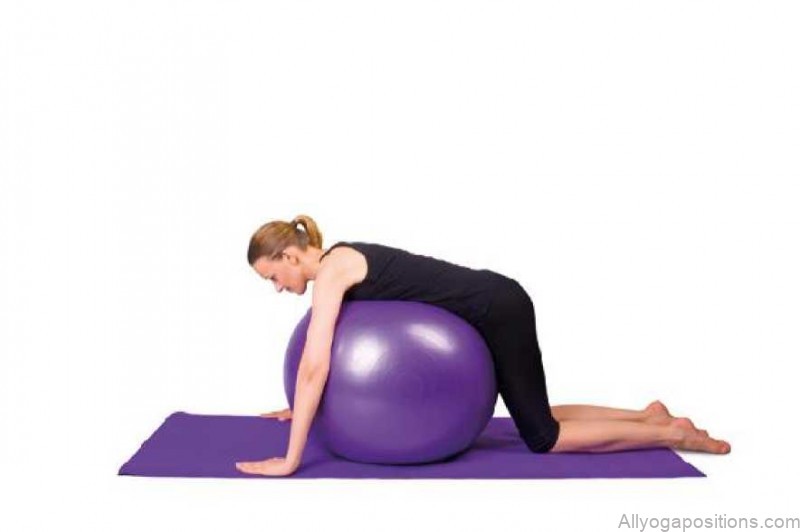
Bring your arms parallel to your body:
Breathe in and straighten yourself, so that your head, chest and legs form a straight line.
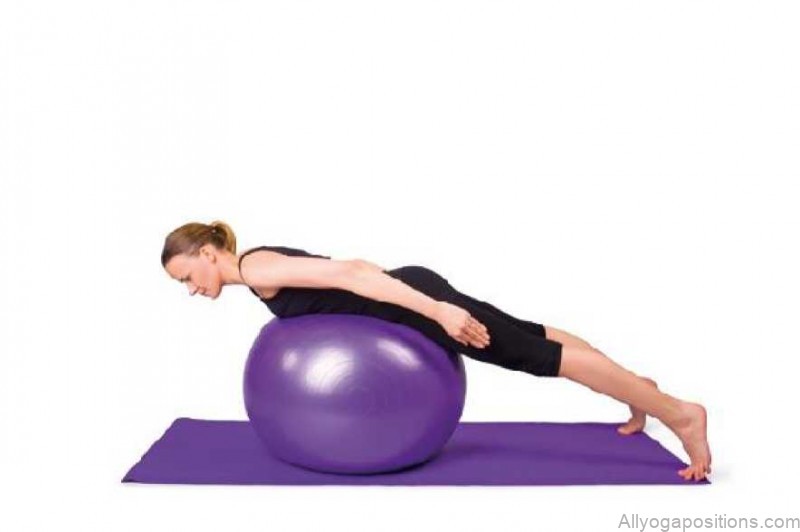
Stretch backwards:
As you breathe out, lift your chest off the ball. Try to bring your shoulder blades together, drawing your arms behind you as far as possible. As you breathe in, return to the starting position.
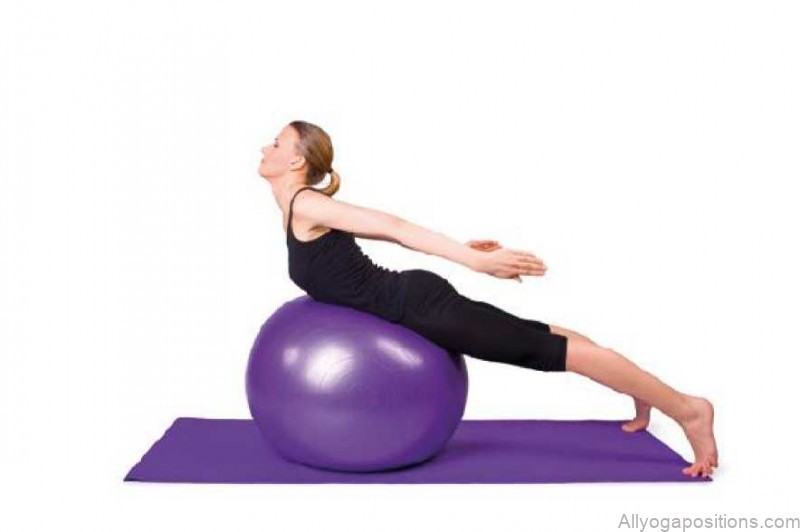
Second stretch
Recommandations
When performing this exercise, try to stretch out your whole chest, from your coccyx to the top of
your head. Make yourself as tall as possible and make sure that all your muscles are tense. Repeat
the exercise 8 times.
Muscles required: pectoral girdle muscles, deltoid, buttocks, thigh muscles.
Starting position:
Place your pelvis on the ball and hug it, palms down and legs bent. Calm your breathing. Breathe in deeply, then straighten your legs as you breathe out.
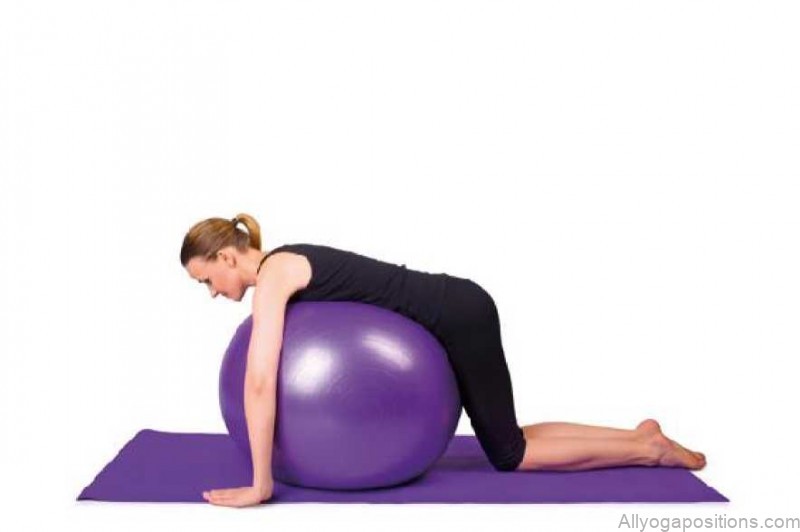
Bring your arms parallel to your body:
Place your legs stretched legs wide apart and support yourself on your toes.
Place your arms beside your body, palms towards your thighs.
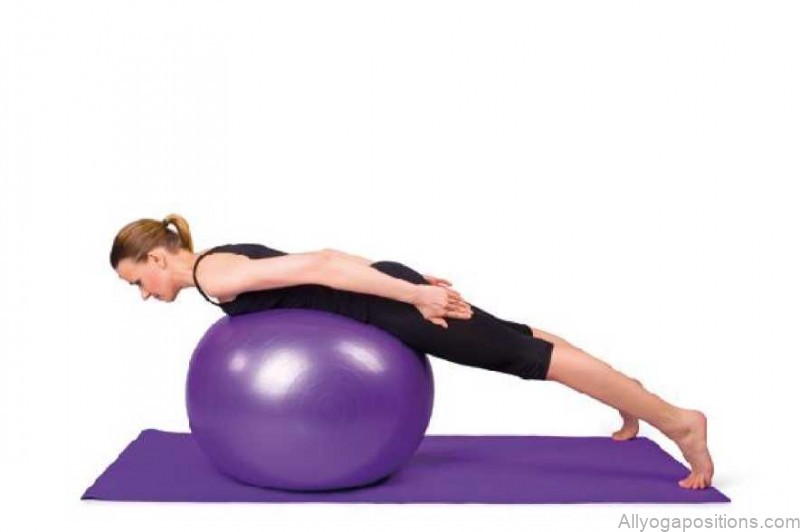
Arms stretched:
As you breathe out, lift your chest away from the ball. Stretch your arms in front of you and squeeze your shoulder blades together. As you breathe in, return to the starting position.
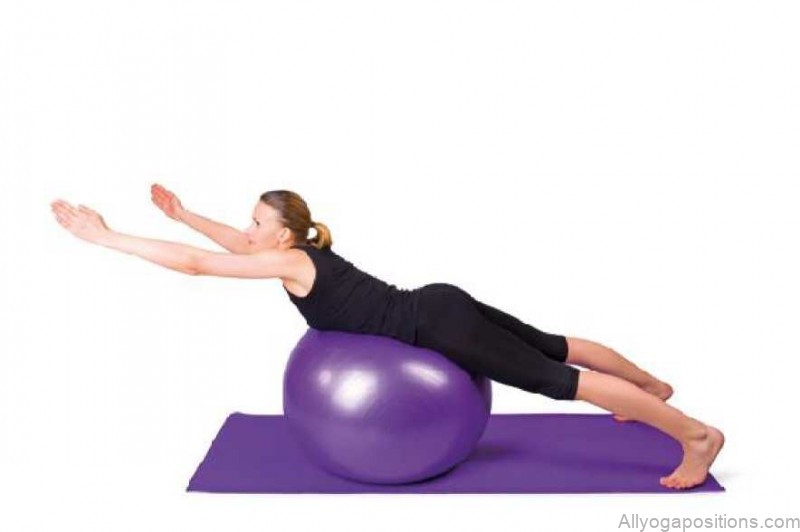
Inverse stretch
Recommandations
When performing this exercise, take care not to tilt your head, your legs should be in line with
your body. Tense your abdominals and buttocks as much as you can. Repeat the position 5 to 7
times.
Muscles required: lumbar muscles, hamstrings, buttocks, biceps.
Starting position:
Place your chest, pelvis and thighs on the ball. Support yourself with your toes, legs bent. Your bodyweight is spread between the ball and your arms.
Arms stretched:
Place your hands in front of the ball, just below your shoulders. As you breathe in, stretch you legs, supporting yourself with your hands. Breathe in.
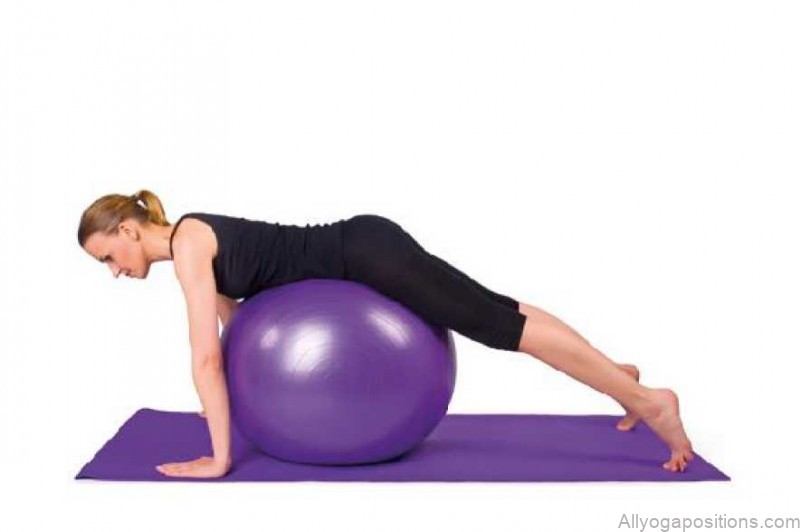
Raise your legs:
As you breathe out, slowly lift your legs and straighten them. Do not forget to tense your abdominals at the same time and also work your buttocks and hamstrings. Breathe in and return to the starting position.
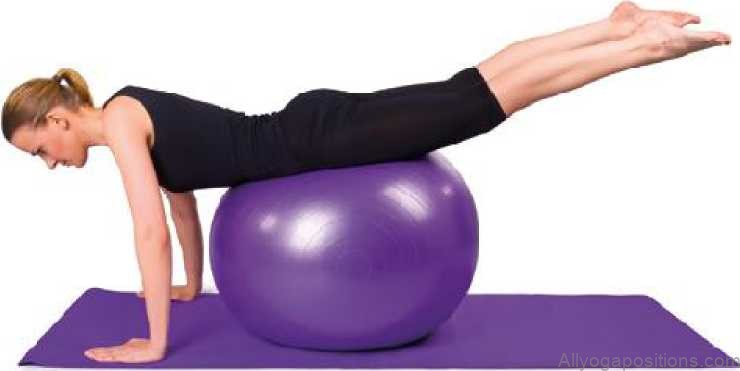
AbdomInal stretch
Recommandations
When performing this exercise, pay attention to your abdominal and pectoral work. Do not close
your eyes. Breathe calmly and steadily. Repeat the exercise 5 times.
Muscles required: abdominals, pectoralis majors.
Starting position:
Assume the position, sitting on the ball. Concentrate and get your balance.
Hold onto the ball with your hands.
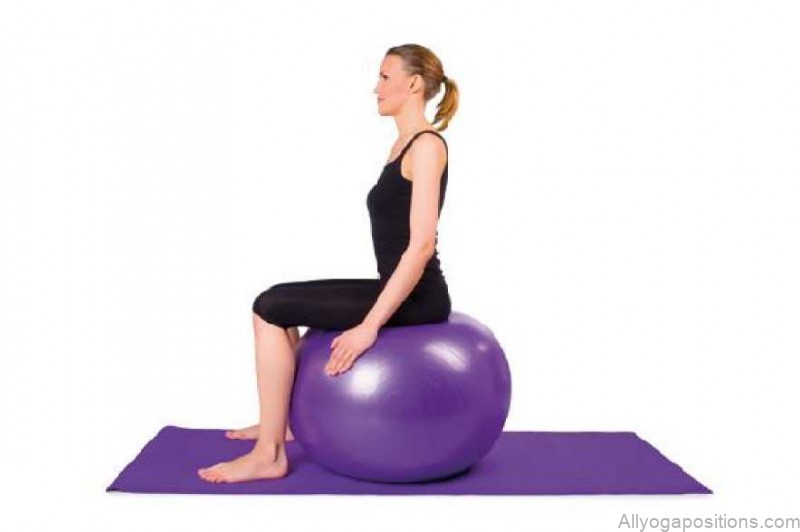
Relax:
As you breathe out, walk forward while leaning back, until your lumbar area is resting on the ball. Hug the ball and calm your breathing.
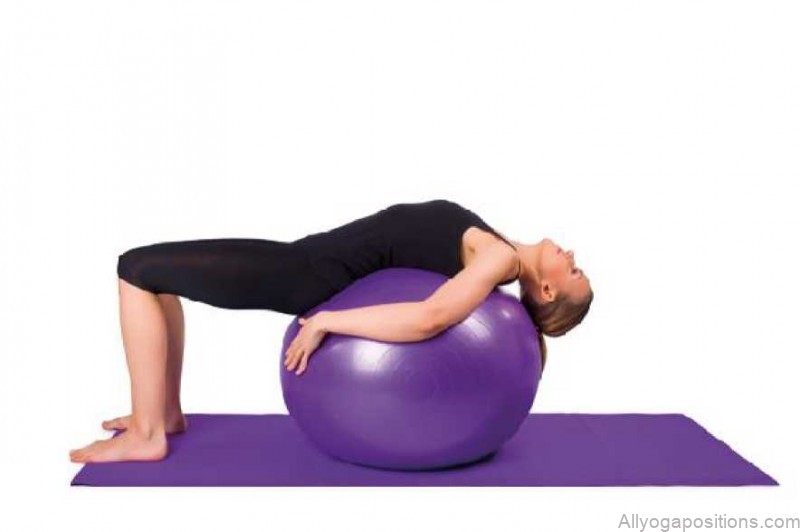
Breathe deeply:
Place your shoulder blades and head on the ball, then part your arms. Your head, back and pelvis should be touching the ball. Hold this position for 15 seconds. Try to relax your lumbar area and abdominals.
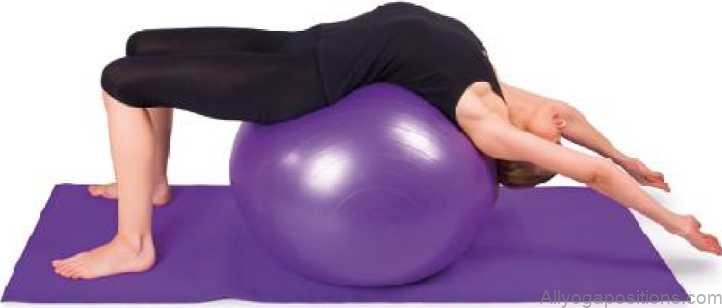
The STRAiGHT LiNE
Recommandations
Do not rush when performing this exercise. It requires maximum concentration and effort. If you
cannot manage to hold a straight line, lift your arm or leg to 45°. Repeat this exercise changing
arm and leg alternately.
Buttock muscles, hip muscles, quadriceps.
Starting position:
Place your head, pelvis, thighs and arms on the ball. Take several breaths.
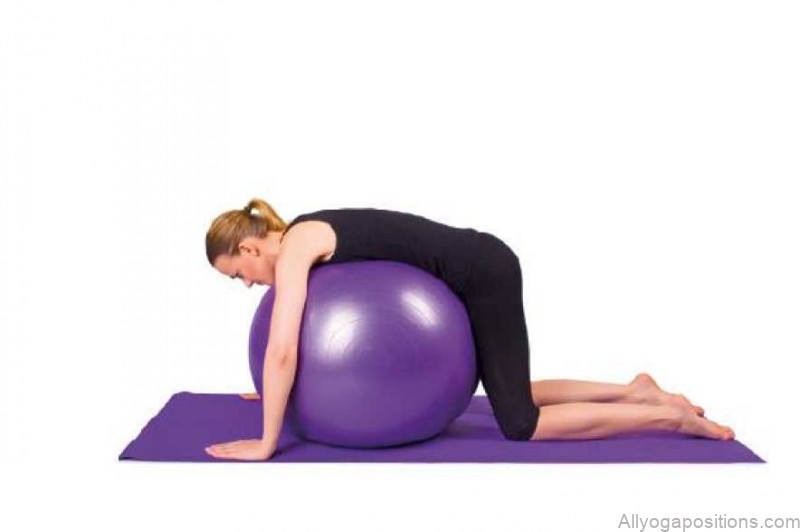
Lift your knees:
Straighten your arms supporting yourself on your hands. Your pelvis remains on the ball. Straighten your legs supporting yourself on your toes. Breathe in.
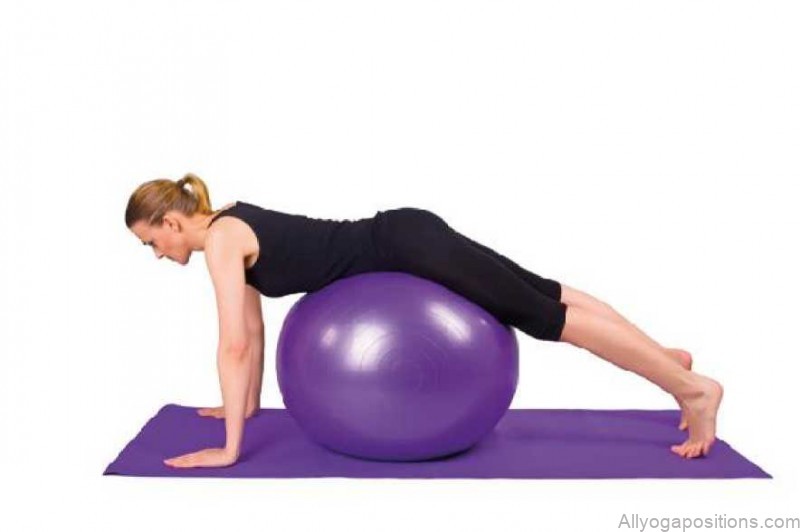
Hold the position:
As you breathe out, lift your left arm and right leg. Try to hold this position (count to 10) and look at your fingertips. Return to the starting position.
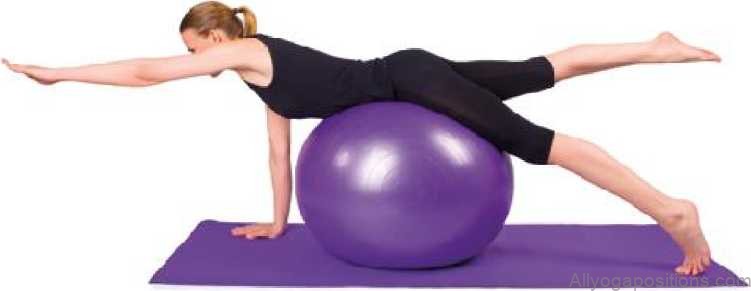
The TwisT
Recommandations
You should perform this last position slowly and pay attention to your breathing. Imagine you and
the ball are one entity. This will enable you to alternately work and relax the abdominal and
lumbar muscles.
Abdominal muscles, the trapezius.
Starting position:
Sit with your legs bent, a shoulder-width apart. Your arms should be in line with your chest, holding onto the ball with your hands.
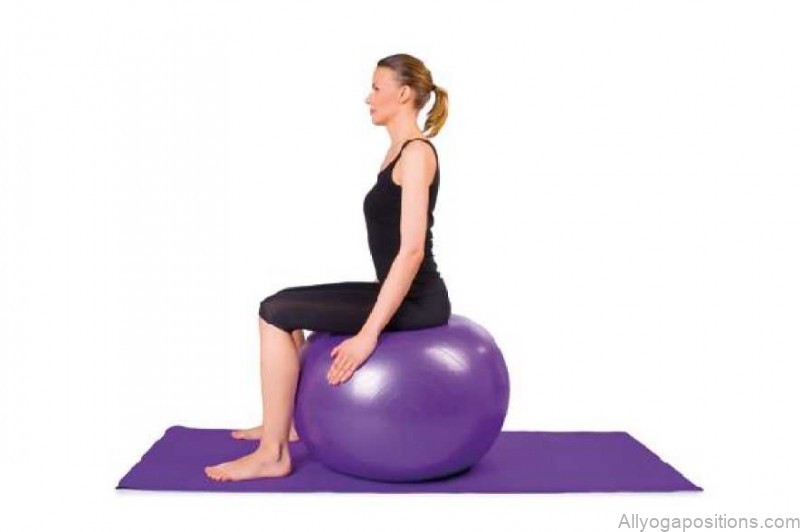
Place your lumbar area on the ball:
As you breathe out, slowly lower your buttocks, so that the ball is located under your spine. Hold onto the ball with your hands. Lower your head and relax.
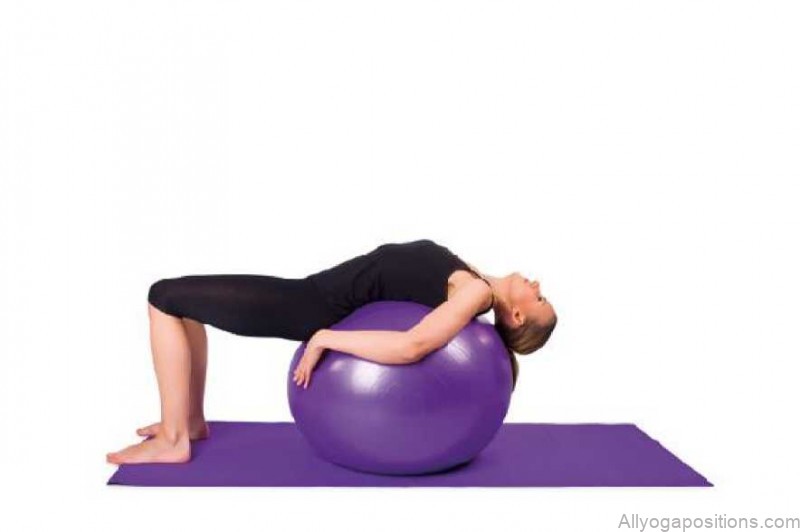
Breathe deeply:
Breathe in. As you breathe out, start to lift yourself up again, walking backwards, so that the ball is located under your buttocks. Place your chest on your legs, bent. Lower your arms. Breathe calmly and steadily.
